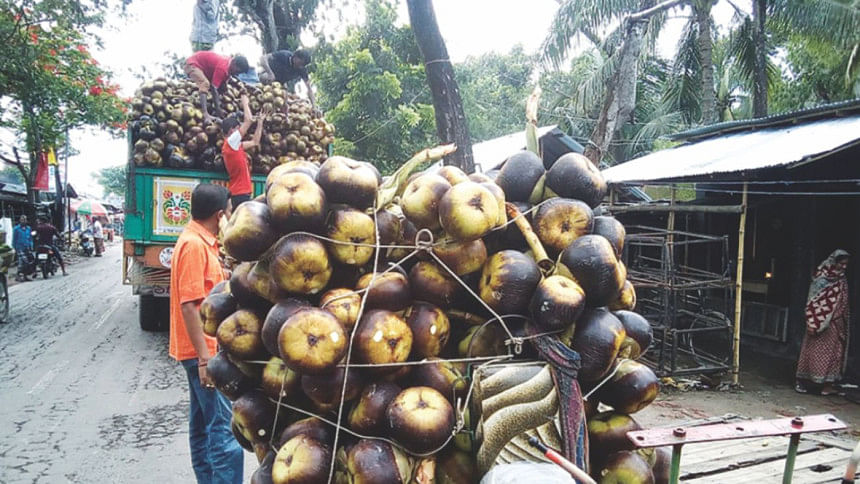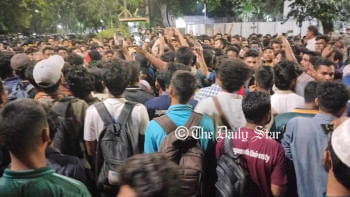Flavour of the season

It's easy to take good things for granted. The native Palmyra palm, locally known as a tal tree, is a familiar village resident. For generations its sweet fruit has been enjoyed, its sap tapped to make jaggery. But in Bagerhat the palm is so ubiquitous that in recent years consumers lost interest. Farmers cut down many palms in response to a market lull. This year however, the popularity of black-husked, gelatinous fruit is back.
“I bought seven Palmyra fruit for Tk 6 each,” says Lizu Akter, a household manager from Baruipara in Bagerhat Sadar upazila. “They're delicious! I prefer the middle part of the flesh, where the fruit is neither too hard nor soft. It's perfect to use when we break our Ramadan fast of an evening, especially as coconuts are much more expensive.”
“My children like Palmyra fruit very much,” says a neighbour, Farida Khatun. “I do too.”
It's not only village families that are rediscovering the delights of Palmyra fruit. Every day from across Bagerhat at least Tk 3 lakh worth of the fruit are being shipped to Dhaka. Trees which farmers had come to view as unproductive are once again bringing in a pretty penny. It's quite a turn around, considering that in recent years Palmyra fruit were simply left to rot in the field.
“I used to have 125 Palmyra palms,” says farmer Ashim Kumar from Sangdia village in Kachua upazila. “I felled most of them since as a crop they weren't viable. Nobody wanted to collect the sap as it is hard work and costly. We used to have to supply bamboo to help the sap-collectors climb the trees three times a day. They also required earthen pots and other equipment. It usually resulted in a loss.”
“But this year our interest in the trees is restored,” he continues. “As sap has not been collected the fruit harvest is especially bountiful. Prices are favourable too.” “From each tree we can sell up to Tk 1,500 of fruit,” says another farmer, Ibrahim Sheikh from nearby Charkathi village. “We are thinking of planting more Palmyra palms.”
Wholesalers are also benefiting from the fruit's renewed popularity. “Each fruit costs around Tk 4 to buy from a farmer,” says Illus Sheikh, a trader from Fatepur Bazar in Kachua. “Most of them we send to Dhaka to sell for up to Tk 20 per piece.”
“We will make up to Tk 3 lakh selling Palmyra fruit this season,” says Akber, another trader at the same market. “Coconuts have become pricey. In Dhaka a coconut retails for as much as Tk
70 and here they cost up to Tk 50, when they are available. Palmyra fruit on the other hand is easier on the household budget. People prefer it these days.”
“Palmyra palm farmers were a little discouraged over the last few years,” says the agriculture department's deputy director in Bagerhat, Aftab Uddin. “But now they are earning a good income from its fruit, without the need for any extra investment. We are encouraging farmers to plant Palmyra palms. The trees have an added benefit of offering protection from lightning strikes.”

 For all latest news, follow The Daily Star's Google News channel.
For all latest news, follow The Daily Star's Google News channel. 



Comments